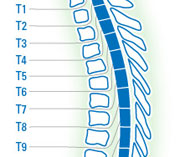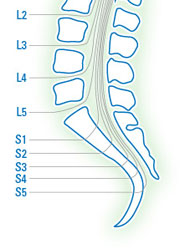Social Security
Social Security Disability and Spinal Cord Injury
Although spinal cord injuries can range in severity and symptoms, they typically have a large impact on a person’s life. While many individuals with spinal cord injuries can go on to live productive and independent lives, most will require an increased level of support.
Unfortunately individuals who can no longer work may find it difficult to pay for their necessary medical treatment, assistive devices, and supportive care. The Social Security Administration (SSA) recognizes the financial strain that occurs after suffering an injury or illness and offers disability benefits to qualified individuals.
|
Click Here — Check out our Over 60 with a Spinal Cord Injury Pinterest board |
Click Here — Check out our Back to Work Adaptations Pinterest board |
Applying for disability benefits can be a long and confusing process. However, doing your research and learning about the different programs will increase your chances of approval. The following article is intended to alleviate any confusion and will prepare you to submit your application.
Definition of Disabled
If you plan on applying for Social Security Disability benefits, you must fit the SSA’s definition of disabled. According to the SSA, an adult is considered to be disabled if he or she meets the following criteria:
• You cannot do work that you did before becoming disabled; and
• You have a physical or mental condition(s) that prevents you from adjusting to a different type of work; and
• Your condition has lasted, or is expected to last, at least one year or result in death.
It is important to note that applicants under the age of 18 will have to fit the SSA’s definition of childhood disability. While the adult definition is based on a person’s ability to work, the child definition is based on the ability to function at an age-appropriate level. The SSA will consider a child to be disabled if they meet the following criteria:
• The child is not working what is considered to be substantial work; and
• The child has a physical or mental condition(s) that severely impacts his or her ability to carry out daily activities; and
• The condition has lasted, or is expected to last, at least one year or is expected to result in death.
The SSA has implemented these definitions to make sure that disability benefits are being distributed to individuals who have long-term disabilities and illnesses. Unfortunately, if an applicant does not meet the above-mentioned criteria, he or she will not be approved for benefits.
Benefit Options
The SSA oversees two main federal disability benefit programs. These are Social Security Disability Insurance (SSDI) and Supplemental Security Income (SSI). Each of these programs offers benefits to different groups of people. Below we have provided you with a general overview of the technical eligibility requirements for each program.
• SSDI is an insurance-type program that offers benefits to disabled workers and their eligible dependent family members. To qualify for SSDI, applicants must have significant employment history and must have made adequate Social Security tax contributions. This program is typically the best fit for adult workers who become disabled. For further details regarding SSDI eligibility, visit the following page: http://www.disability-benefits-help.org/ssdi/qualify-for-ssdi
• SSI on the other hand is a means-based program that offers benefits to disabled individuals of all ages who earn very limited income. To qualify for SSI benefits, applicants must meet the specific financial requirements set by the SSA. Because there SSI has no work or tax requirements, this program will provide financial assistance to adults and children alike. In the case of a child applicant, the SSA will evaluate a portion of the parents’ income to determine eligibility for the program. For further details regarding SSI benefits, visit the following page: http://www.socialsecurity.gov/ssi/text-eligibility-ussi.htm
In certain circumstances, it is possible for applicants to receive benefits from both programs. Also of importance: Medicare and Medicaid coverage is available to most individuals who qualify for disability benefits. After a two year waiting period, all SSDI recipients become eligible for Medicare and SSI recipients become eligible for Medicaid immediately.
Medical Requirements
All applicants will also be evaluated based on the severity of their medical condition. This assessment is done in accordance with the listings in the SSA’s Blue Book. The Blue Book contains the medical requirements for all potentially disabling conditions that are recognized by the SSA.
Adults with spinal cord injuries will primarily qualify under listing 1.04 of the Blue Book section dedicated to the Musculoskeletal System. This listing covers disorders of the spine. To qualify under listing 1.04, applicants must provide medical evidence of the following:
• Nerve root compression characterized by pain, limited movement of the spine, and muscle loss or weakness. Nerve root compression must be accompanied by sensory or reflex loss; or
• Spinal arachnoiditis characterized by severe burning or painful dysesthesia resulting in the need to change positions more than once every two hours; or
• Lumbar spinal stenosis that causes pain, weakness, and significant difficulty walking or moving.
It is important that you consult the Blue Book to read this entire listing. You may also wish to work with your doctor or doctors to understand the complicated medical terms and to procure all necessary medical evidence. This listing can be accessed here: http://www.ssa.gov/disability/professionals/bluebook/1.00-Musculoskeletal-Adult.htm#1_04
Note that if you have suffered vertebral fractures but do not have nerve root compression, you may still be able to qualify for benefits if your symptoms closely match those listed above. If you have become paralyzed as a result of a neurological condition, such as Multiple Sclerosis, you may better match the requirements of Blue Book listing 11.08—Spinal Cord or Nerve Root Lesions.
Applicants under the age of 18 will be evaluated based on the childhood Blue Book listing for spinal disorders. This listing is labeled 101.04—Disorders of the Spine. Due to this listing’s similarities to the adult listing, we have not listed the specific childhood requirements within this article. However, you can access the childhood listing here: http://www.ssa.gov/disability/professionals/bluebook/101.00-Musculoskeletal-Childhood.htm#101_04
The Application Process
The initial application for adults can be completed on the SSA’s website or by scheduling an appointment with a local SSA office to complete the application in person. Both are effective ways to apply, applicants can choose which they prefer. Children under the age of 18 however, must attend a mandatory interview with an SSA representative. Although a portion of the child’s application can be completed online, many parents prefer to complete all paperwork during the scheduled interview.
Both child and adult applicants should enter the application process well-armed with the necessary medical evidence and financial records. To view a complete list of the documents you will need, contact the SSA by phone or visit the following website: http://www.ssa.gov/pgm/disability.htm
After submitting your application, it may be several months before you receive a decision. It is important that you continue to save medical records and follow prescribed medical treatment while you wait. In the event that your initial application is denied, you will have 60 days in which to appeal this decision.
Although being denied can be disappointing, it is not the end of the road. Do not give up. Many more applicants are approved during the appeals process than during the initial application. For more information regarding spinal cord injuries and disability benefits, visit the following page: http://www.disability-benefits-help.org/disabling-conditions/spinal-conditions-and-social-security-disability













